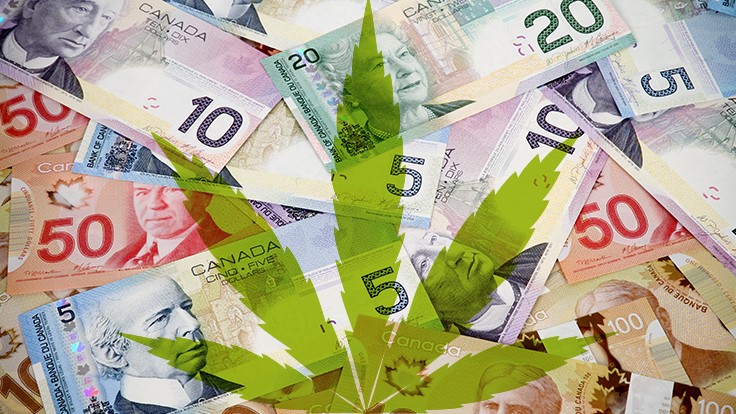Image via
Legal weed boosted Canada’s economy by C$43.5 billion (US$34.3 billion) during the first three years of adult-use sales, according to a new report by Deloitte Canada and the Ontario Cannabis Store (OCS).
Since the country’s first adult-use shops opened their doors in October 2018, the Canadian cannabis industry has sold an estimated $11 billion worth of pot. Two-thirds of these sales (67.8 percent) came from recreational cannabis retailers, while the remaining third came from the country’s existing medical marijuana market.
During the first three years of legal sales, cannabis businesses shelled out $29 billion in capital expenditures, most of which was spent constructing cultivation and processing facilities, testing labs, and retail stores. The combination of sales and capital costs added $43.5 billion to Canada’s gross domestic product (GDP), boosting the economy by $1.09 for every single dollar spent.
And for every dollar spent in revenue or capital expenditures, the industry has been able to create four new jobs. As of 2021, the industry is currently sustaining 151,000 additional jobs that would not have existed otherwise. Legal cannabis has also brought the country an estimated $15.1 billion in tax revenue, $2.9 billion of which came directly from weed sales and excise taxes.
The report indicates that the industry is finally seeing signs of growth after a disappointing start. In the first year of sales, the adult-use industry was plagued by supply chain issues, high prices, and limited retail locations. As a result, 80 percent of Canadians continued to buy their bud from the black market, and legal retailers only made $1.6 billion in combined medical and adult-use sales.
The industry fought hard to gain market share, though, opening thousands of new retail shops, selling low-cost flower options and cannabis seeds, and opening convenient new delivery services. By 2021, annual sales climbed to $3.9 billion, more than double the first year of sales. And according to a recent survey, 67.5 percent of Canadian stoners chose to buy legal weed last year.
Out of all Canadian provinces, Ontario’s legal weed market has shown the strongest signs of growth. Since 2018, the province’s cannabis industry made $3.8 billion in sales, accounting for more than a third of all the legal weed sold in the entire country. And in 2021, Ontario became the first province to outsell the black market, with 54 percent of all pot purchases being made at legal retailers.
But despite the financial success of its weed industry, the Great White North is still facing an extreme diversity problem. According to a recent study, men accounted for 86 percent of all Canadian cannabis industry directors and executives in 2020. That same study revealed that people of color only made up 16 percent of Canadian business industry leaders.
In the US, many states’ adult-use regulations include social equity measures designed to help minority-owned businesses gain a foothold in this lucrative new market. Health Canada did recently launch a new initiative to help indigenous people kickstart legal weed businesses, but as a whole, Canada has made little effort to support diversity within its cannabis industry.











